This article is the third in the series focusing on Intelligent Heart as the key to cultural transformation. The first article explored the substantial positive impact of The Pacific Institute’s Thought Patterns for a Successful Career® on the success of career-college students experiencing the Institute’s principles as part of their first-in course. The second article explored the leadership commitment required to change culture through workforce engagement in Intelligent Heart. The third article explores the tools and processes for integration of Intelligent Heart and soft skills across curricula.
The Pacific Institute principles applied in higher education have demonstrated a measurable impact on student outcomes. The process for effective integration into curricula requires close collaboration between instructional design, program leadership and faculty.
Stuart Vanorny and Mary Nisbet have experienced first-hand the power and impact of The Pacific Institute’s principles applied in the classroom. In their prior and current academic leadership roles in higher education, they have been accountable for Intelligent Heart integration into curricula via both ground campus and the Pearson Learning Studio/eCollege classroom as well as broad dissemination to the workforce.
During their work together over the last decade, Vanorny and Nisbet have implemented The Pacific Institute’s principles at three institutions with resounding success. While the nuances of implementation varied based on institutional culture, the core steps were universal.
- Integration of Thought Patterns for a Successful Career® into the first-in course as the foundation for student success
- Execution in Pearson Learning Studio/eCollege in a streamlined format to engage students starting their online education
- Development of a virtual training course for faculty to disseminate Intelligent Heart principles and their application in the classroom
At each institution, the first step in the process is the redevelopment of the first-in course to integrate the Thought Patterns for a Successful Career®textbook, worksheets, and videos. Working directly with faculty and various subject matter experts, Vanorny, an experienced instructional designer, has created different iterations of the course, from 6 weeks to 12 weeks. Each week of the course typically involves an asynchronous discussion, learning activities, such as the completion of worksheets and reflective exercises, and, finally, short assessments to determine whether the students are learning what was established in the outcomes and objectives. At one of their institutions, over the course of one year, Vanorny and Nisbet saw a 23.3% increase in the number of As, Bs, and Cs that students earned and an 8% decrease in the drop rate, which they say can be directly attributed to the Thought Patterns for a Successful Career®content and the first-in professors, who worked tirelessly to both educate and motivate their students.Hand-in-hand with the redevelopment of the first-in course, was the development and implementation of the online version of the Intelligent Heart course that was used to train faculty. Vanorny worked closely with The Pacific Institute’s staff to create the online version of the Intelligent Heart course within the Pearson LearningStudio platform. Together, they created an instructional plan that would allow a combination of synchronous and asynchronous learning events that both mimicked the on-ground experience and took advantage of what an online course has to offer.
For each unit of the online IH course, faculty read selections from the course text,Thought Patterns for High Performance® 3.0, watch a series of videos, and complete interactive online activities. At the end of each unit, the faculty takes a short 5-question assessment based on the objectives. Utilizing the Path Builder functionality within LearningStudio, faculty had to answer all five questions correctly in order to move on to the next unit until. The instructors’ scores were registered via the course gradebook and an administrator tracked their progress daily, following up with any instructor who might have fallen behind. In addition to the online course, the faculty met with the Institute’s staff via a series of live webinars, each of which were recorded and made available in the online course.
The virtual training course for faculty was designed to assure that all faculty – full-time and adjunct – were immersed in the Intelligent Heart concepts. Training was part of the organization-wide Intelligent Heart initiative to get all stakeholders on board for the cultural transformation journey.
The course is housed in Pearson Learning Studio/eCollege and includes the following TPI units:
- Unit 1: Hidden in Plain Sight
- Unit 2: Expand the Mind to Create the Future
- Unit 3: How the Mind Works
- Unit 4: Beliefs Regulate Performance
- Unit 5: The Internal Conversation
- Unit 6: Comfort Zones
- Unit 7: The Next Time…
- Unit 8: Out of Order – Into Order
- Unit 9: Seeing Myself into the Future
- Unit 10: Living in Today, Planning for Tomorrow
- Unit 11: Tools for Change
- Unit 12: It’s My Choice
- Unit 13: Yes, I Am Good!
- Unit 14: Goal-Setting Through!
- Unit 15: Successful and Significant
The training course was deployed for both ground campus and online faculty and in the future, can also be used for onboarding. Integration of Intelligent Heart into hiring and onboarding processes assures that incoming faculty members are “Intelligent Heart ready.”Steps to consider in formulating an Intelligent Heart curriculum integration initiative include:
- Soft Skills Simulations. Employers’ need for soft skills in the workplace is well documented; to deliver workplace-ready graduates, institutions of higher education must build curricula that teach soft skills as well as program-specific competencies. Simulations built for the online or ground campus classrooms will require students to think critically about empathy, compassion, collaboration, problem solving,
- Faculty Engagement. Identify the star performers who are highly competent in their disciplines and demonstrate Intelligent Heart. They should be tapped to participate in strategy development and curricula integration as well as serve as champions for Intelligent Heart. Prepare for the likely challenge that some current faculty members – a small subset – will not be “Intelligent Heart ready” and may also be unwilling to commit to the principles of the cultural transformation.
- Collaboration between Instructional Design, Faculty, and TPI. Set up daily or weekly meetings to plan, design, and build your online course within your existing Learning Management System or work with The Pacific Institute to offer the online course elsewhere. Remember to work out the details and the schedule for the live webinars. Meeting in real time via live webinars and also allowing faculty to complete online work on their own time will be the key to a successful integration.
- TPI collaboration for semi-annual IH faculty events. Because use of The Pacific Institute’s Thought Patterns for a Successful Career® textbook accrues training credits for each institution, refreshers and in-services can be held in collaboration with the “outside experts” whose world-renowned profiles lend credibility, stature, and depth. The Pacific Institute team assists each institution with keeping the Intelligent Heart strategy vibrant and fresh.
Embedding Intelligent Heart across programs requires strategic and deliberate development of universal approaches that will effectively span curricula. As a major plank in the Intelligent Heart platform, this strategy requires collaboration between Instructional Design, Academic Leadership, and faculty. The Pacific Institute’sThought Patterns for a Successful Career®launches the student-facing strategy; academic administration must collaborate with the Institute to sustain it over the student lifecycle.The next article in the series will explore hiring, onboarding, and evaluation processes that sustain Intelligent Heart culture.
Leadership Lessons/Intelligent Heart Cultural Transformation
- Effective integration of soft skills and Intelligent Heart into curricula requires a “stake in the ground” via The Pacific Institute’s Thought Patterns for a Successful Career® textbook into the first-in course, setting the stage for student success.
- Faculty readiness is key; faculty members who have taught the first-in course in its prior format may not be a good fit for the new iteration.
- Those teaching Intelligent Heart must be screened and trained to assure understanding and effective classroom delivery of this powerful and life-changing content.
- Strategies for soft-skill integration must be executed throughout curricula to extend Intelligent Heart focus throughout the student lifecycle.
- Integrating Thought Patterns for a Successful Career® into your first-in course may help you improve student success and student retention.
- Combining asynchronous and synchronous learning opportunities within the Intelligent Heart training course allows your faculty the opportunity to learn at their own pace and gain real-time knowledge via webinars.
Featured posts
May 16, 2023
May 16, 2023
May 16, 2023





